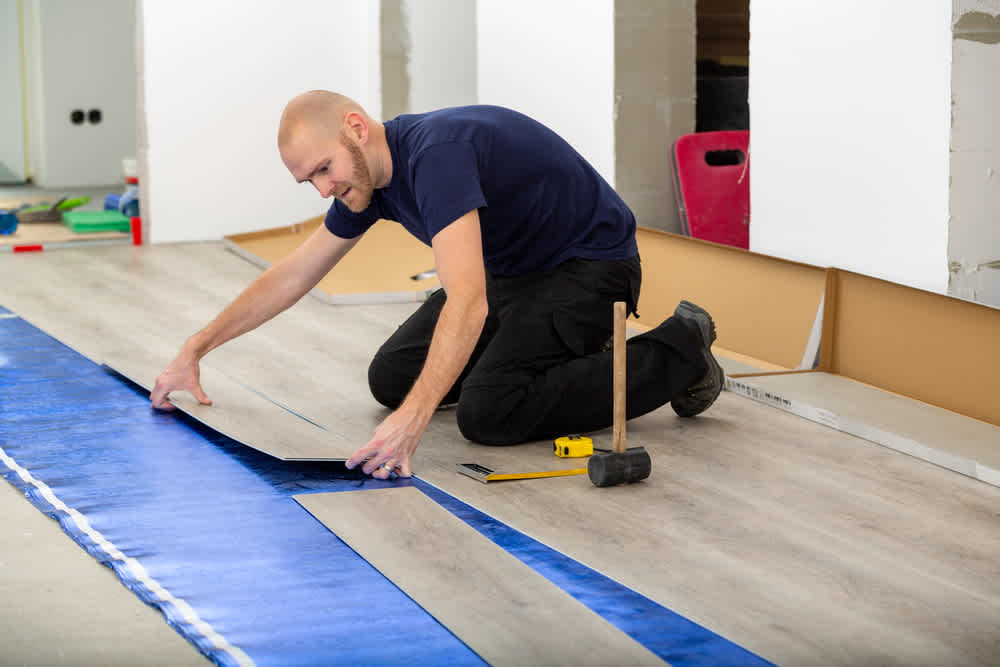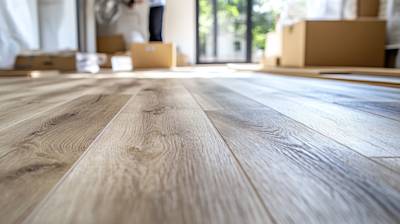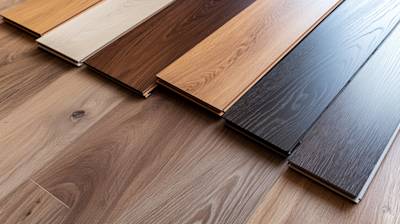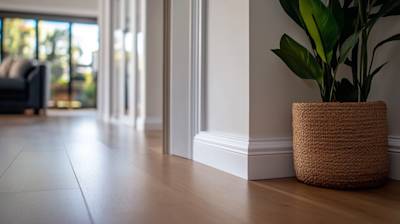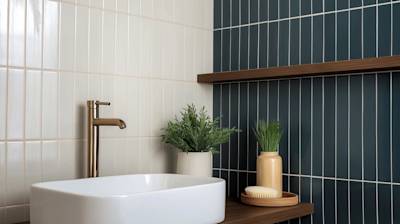As you embark on your home's flooring project, you'll soon discover one integral part that often goes overlooked: floor underlayment. This layer often remains concealed under the finished flooring, but it's arguably one of the most important aspects of a successful floor installation. This detailed guide is designed to give you a comprehensive understanding about this under-recognized flooring component.
Understanding the Basics of Floor Underlayment
Floor underlayment serves as the intermediary layer set between the subfloor and the surface flooring. Commonly made from rubber, cork, foam or plywood, underlayment provides several vital functions like:
- Improving overall comfort
- Offering thermal and sound insulation
- Acting as an extra moisture barrier
- Helping to level subfloors
- Prolonging finished floor lifespan
Types of Floor Underlayment
There's an array of underlayment options tailored to work well with various types of surface flooring. Here we delve into the common types:
Plywood Underlayment
Plywood is frequently employed for underlayment, especially beneath hardwood floors. A plywood underlayment provides superb stability and smoothness. They're also great at hindering squeaky noises, promising comfortable steps around your house.
Foam Underlayment
Foam underlayments are perfect for vinyl, laminate, and engineered hardwood floors. Their stellar noise-cancellation quality, moisture resistance, and soft cushion feel make them a chosen ally for several flooring projects.
Cork Underlayment
Cork underlayments are eco-friendly, efficient in minimizing impact noise, and demonstrate brilliant thermal insulation qualities. They're most effective under stone, wood, or ceramic tile flooring.
Rubber Underlayment
Revered for its soundproofing quality, rubber underlayment helps negate footfall noise while displaying resistance to mold and moisture. This is ideal for basements or high-humidity areas.
Considering Underlayment Thickness
A crucial factor when choosing your underlayment is its thickness. Here's a breakdown to help make your selection process significantly easier:
- 2mm: Ideal for areas with low foot traffic. Suitable for bedrooms and living rooms.
- 3mm: An excellent choice for moderate to high traffic areas like hallways or offices.
- 5mm & 6mm: These underlayment thicknesses are best suited for commercial locations with heavy foot traffic.
Installation Techniques for Floor Underlayment
There are typically three methods to installing floor underlayment; Float, Glue, and Nail.
- Float: Common among laminate and engineered hardwood floors, the underlayment is simply rolled out and the flooring placed on top.
- Glue: Often used for solid hardwood flooring, adhesive is applied between the underlayment and subfloor, and also between the underlayment and surface floor.
- Nail: Here, underlayment is nailed or stapled to the subfloor. This method is ideal for solid hardwood, engineered wood, and plywood underlayment.
Frequently Asked Questions about Floor Underlayment
What Types of Floor Underlayment Are There?
There is a wide array of floor underlayment materials available, designed for various flooring types. These include foam, cork, felt, rubber, and plywood among others. For example, felt underlayment is widely used for hardwood and laminate flooring, while foam or cork might be ideal for use under vinyl or linoleum flooring.
Can I Install Flooring Without Underlayment?
While it's physically possible to install flooring without underlayment, it isn't generally recommended. The use of underlayment can drastically improve the look, feel, and longevity of your floors. Without it, you may encounter issues such as uneven surfaces, increased noise, and insufficient protection against moisture.
How Do I Choose the Right Underlayment for My Floor?
Choosing the right underlayment largely depends on your type of flooring and specific needs. Take into consideration factors such as the need for moisture or sound protection, the type of subfloor, and the flooring material you'll be using. Additionally, it's critical to review the flooring manufacturer's recommendations as using the wrong underlayment can void your warranty.
Is Floor Underlayment Necessary for All Types of Flooring?
Not all types of flooring require underlayment. For instance, carpet typically only requires a padding, not an underlayment. However, most hard surfaces such as wood, laminate, and tile could benefit from the use of underlayment. It's always a good idea to check with your flooring provider for specific recommendations regarding underlayment.
Can I Reuse My Old Underlayment When Installing New Floors?
While it might seem cost-effective to reuse old underlayment, it's generally not the best idea. Over time, underlayment will wear out and lose its effectiveness, especially in its roles in moisture protection and noise reduction. Reusing old underlayment may also void the warranty on your new flooring.
What's the Difference Between an Underlayment and a Vapor Barrier?
Underlayment is a material that's typically used on top of the subfloor and under the finished floor to provide a smooth surface and absorb sound. A vapor barrier, on the other hand, is used to prevent moisture from the ground or subfloor from damaging the finished floor. Some types of underlayment also act as a vapor barrier.
Is Installing Underlayment a DIY Project?
While installing underlayment can be a DIY project, it requires a fair amount of expertise to ensure it is done correctly. If you're not comfortable with your skills, it may be best to hire a professional. Mistakes in underlayment installation can lead to a host of issues with your finished flooring.
How Do I Maintain My Underlayment?
Underlayment typically requires minimal direct maintenance as it is protected by the finished floor. The key to maintaining your underlayment is to take care of your finished floor. This includes regular cleaning and immediate attention to spills or moisture to prevent damage from seeping down to the underlayment.
Pros of Floor Underlayment
Improved Comfort
Enhances Softness
A major pro of using floor underlayment is that it increases the overall comfort of your flooring. Because the underlayment is placed directly under the main floor surface, it adds an extra layer of cushioning, creating a softer feel underfoot.
Reduces Cold
The underlayment also plays a critical role in reducing the cold that can emanate from the floor, particularly during the cold months. Not only does this add to your comfort, but it can also contribute to a slight reduction in energy consumption since less heat will be needed to warm up the room.
Noise Reduction
One of the primary functions of floor underlayment is to assist in noise reduction. The extra layer that the underlayment provides helps to absorb and reduce the transmission of sounds, such as foot traffic, dropped objects, and even airborne noise such as conversation and TV. This is especially beneficial in apartments and multi-level homes.
Durability and Longevity
Protects the Floor
By providing an extra layer of protection between your floor and subfloor, underlayment can help prevent damage and extend the lifespan of your flooring.
Prevents Subfloor Imperfections
Additionally, track and depressions on concrete subfloors can potentially damage your floor coverings. Underlayment can help to fill in these imperfections and create a smooth surface for your flooring to lay on.
Increase in Home Value
Depending on the type of underlayment and flooring used, floor underlayment can be a factor in the valuation of a home. Homes with well-installed underlayment and quality flooring are often valued higher than those without because of the benefits it offers.
Cons of Floor Underlayment
Additional Cost
One of the significant cons of floor underlayment is the additional cost. Depending on the type of underlayment you choose, this could add a significant amount to your total flooring cost. This can particularly be the case with higher-end underlayment materials such as cork or rubber.
Installation Complexity
Installation Time
Installing underlayment can also be a time-consuming task. Especially since it needs to be fitted perfectly to ensure maximum benefit. This can often extend the timeframe of your floor installation project.
Professional Assistance Required
For the best results, professional installation is recommended. Improper installation can lead to problems such as bubbling, poor performance, and reduced lifespan. This can add to the costs and complicate the process further.
Not Always Necessary
While underlayment brings with it numerous advantages, it's not always a necessary inclusion in your flooring project. For some types of flooring, such as carpet or some types of vinyl, an underlayment can actually be detrimental. Therefore, understanding your flooring type is critical to making the right decision.
May Increase Floor Height
Floor underlayment can increase the height of the flooring, which may require adjustments to doors and possibly appliances. This can be a disadvantage in situations where you are working with limited room height or door clearance.
Summary
So there you have it, floor underlayment is more than just another layer beneath your flooring. It's an unsung hero, working behind the scenes to give comfort, stability and longevity to your flooring. Its benefits are many - from reducing noise levels, providing insulation to even acting as a moisture barrier. A careful choice of floor underlayment can really pay off in the long term, enhancing not just the quality of the floor, but also the overall living experience in your home.
But remember, selecting the right floor underlayment isn't just about purchasing the most expensive or the one with the best reviews. It's about understanding your floor type, its specific requirements, and also the climatic conditions of your place. So do your homework, seek professional advice if you need, and choose wisely.
And finally, fitting a floor underlayment might appear like a simple DIY job, but for optimal results, it's better left to professionals. An incorrectly fitted underlayment can lead to a multitude of problems, including uneven flooring, moisture percolation and compromise on the insulation properties. In other words, an expense that you thought you saved on could end up costing you more. So be mindful, invest in quality underlayment, and ensure proper installation to enjoy a smooth, cozy and durable floor.
About Solid Construction & Design
About Solid Construction & Design
Meet Solid Construction & Design, Sacramento, CA's renowned construction and design company. We are your neighborhood local professionals, specializing in home improvements, kitchen and bathroom remodels, and comprehensive home designs. Backed by years of experience and a focused commitment to customer satisfaction, you can trust us to deliver top-notch quality on every project. We're not just builders, we're partners in fulfilling your dream home visions. Come and work with us and experience reliability fused with exceptional craftsmanship that only Solid Construction & Design can provide.

